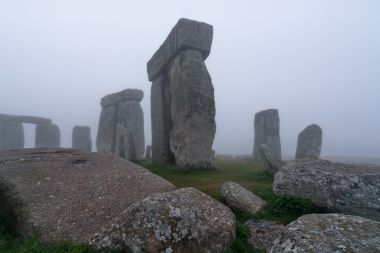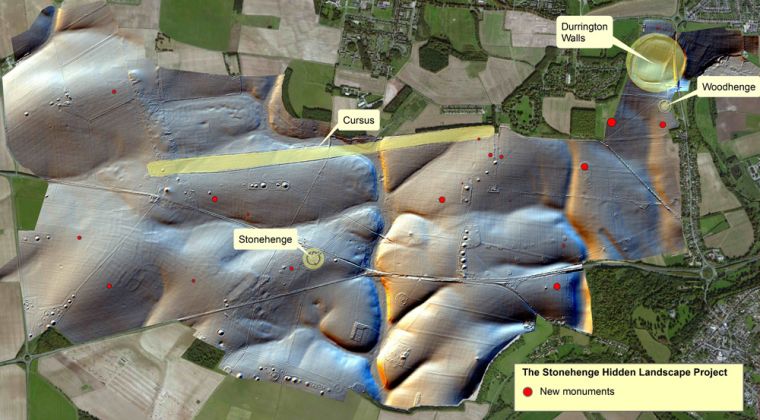Digital map shows hundreds of new archeological finds around Stonehenge

Archeologists have recently discovered hundreds of new features around the Stonehenge, including a huge timber building that predates the mysterious circular stone structure. The wooden building may have been used for ancient burial rites that included removing flesh from the dead. The discovery is part of The Stonehenge Hidden Landscapes Project, a digital mapping project spearheaded by the University of Birmingham.
"Dozens of burial mounds have been mapped in minute detail, including a long barrow (a burial mound dating to before Stonehenge) which revealed a massive timber building," the university's website says. "(It was) probably used for the ritual inhumation of the dead following a complicated sequence of exposure and excarnation (defleshing), and which was finally covered by an earthen mound."
The scientists used the latest technological gadgets and remote sensing techniques to do a non-invasive survey of the area. Through this technique, the researchers were able to come up with a detailed digital map that reveals 17 ritual monuments which were previously undiscovered, enormous prehistoric pits that seem to have astronomical significance, as well as settlements from different ages (Bronze, Iron, Roman) and even practice trenches used by the military during World War I.

Professor Vincent Gaffney, Chair in Landscape Archaeology and Geomatics at the University of Birmingham and British project leader of The Stonehenge Hidden Landscapes Project, said, "Developing non-invasive methods to document our cultural heritage is one of the greatest challenges of our time and can only be accomplished by adapting the latest technology such as ground-penetrating radar arrays and high-resolution magnetometers."
One of the project's most exciting discoveries relate to the massive Durrington Wall "super henge." The ritual monument is located a short distance away from the more famous Stonehedge, but it's significantly larger, with a circumference that measures over 1.5 kilometers.
According to the article, "A new survey reveals that this had an early phase when the monument was flanked with a row of massive posts or stones, perhaps up to three metres high and up to 60 in number – some of which may still survive beneath the massive banks surrounding the monument."
BBC will feature a documentary about the project entitled "Operation Stonehenge: What Lies Beneath" to be shown on Sept. 11.











